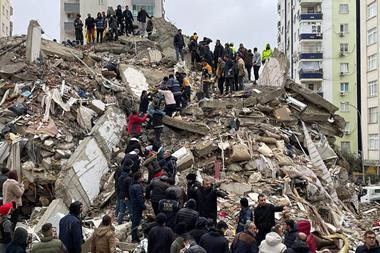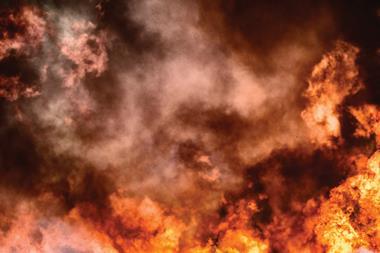Ahead of the World Cup, a research paper highlights common causes of severity loss and key risk management lessons
With the Men’s FIFA World Cup kicking off in Qatar in November, research has drawn attention to the risk implications of natural disasters at such major events.
Published in the Journal of Safety Science and Resilience, a research paper led by academics from the China University of Mining and Technology, stated that accidents caused by natural disasters at sports sites “may cause catastrophic loss of great concern”.
Such major events are held regularly worldwide, usually in the city centre and attracting huge swarms of spectators. As such, there are far reaching risk implications for event hosts, sponsors and businesses in the area.
The research paper stressed that previous studies on risk assessments of sports sites only focus on operational risk and equipment failure.
Domino effects and disaster chains
However, this ignores “the risk of domino chains caused by natural disasters at large-scale events” and outlined a series of risk managements lessons for such events.
The research stated that because of environmental deterioration, natural disasters are occurring more frequently: “In addition to their frequency, the suddenness of disasters also determines the severity of the accidents they induce,” it said.
“As large-scale sports sites attract a large number of participants (spectators, contestants, and on-site staff), and have complex types of equipment, natural disaster-induced accidents at these sites present a multi-hazardous situation.”
For example, if a natural disaster destroys the basic equipment at the stadium or causes it to malfunction, it creates a ‘disaster chain’ that may cause catastrophic damage.
“We should pay great attention to the risk of domino chains caused by natural disasters during large-scale events,” the paper stated.
Qatar, which has several natural hazards such as floods, droughts and sand storms, is expecting 1.5 million fans to visit during the World Cup.
For the APAC region, such events are commonplace, such the Olympic Games in Tokyo last year while Beijing held the Winter Olympics in February.
Australia will host the Men’s T20 World Cup in October and will co-host the FIFA Women’s World Cup with New Zealand next year.
Sources of severity losses
The research undertook a ‘natural disaster-induced accident-chain evolution analysis model’ to assess the domino accidents triggered by an earthquake at large-scale winter sports sites.
The results of the research’s analysis indicate that “stampede accident” and “fire or explosion” are the dominant causes of significant loss, which should be given more attention to improve early warning processes.
It also found that when the automatic sprinkler system fails in large-scale sports sites, the probability of fire and explosion accidents will increase from 17% to 44%, and that of poisoning accidents from 23.4% to 56.9%.
Simultaneously, the number of serious casualties also increases by 12.7%. Therefore, the reliability of automatic spraying devices should be a consideration.
Finally, a safety strategy improvement analysis quantifying the allocation of safety resources found that 70% of all the efforts – including manpower, material, and financial resources – should be assigned to electrical equipment, 15% to refrigeration equipment, 10% to changing the lifeline system, and 5% to the automatic sprinkler system.




















No comments yet